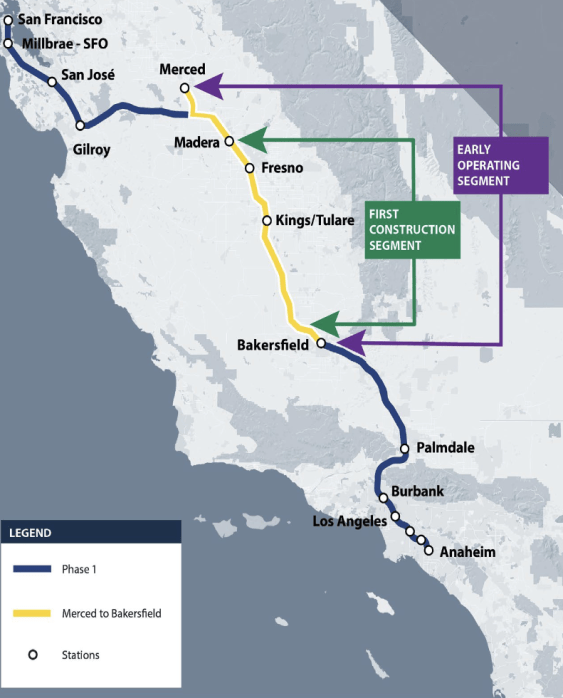 Image: AC Transit
Image: AC TransitBus Rapid Transit in the East Bay cleared an important hurdle yesterday as the Oakland City Council cast a unanimous vote in support of adopting a "locally preferred alternative" route.
The route through Oakland would travel primarily on International Boulevard and Telegraph Avenue as part of a future AC Transit BRT corridor through Berkeley, Oakland and San Leandro. As a full-featured BRT line, it would include dedicated travel lanes for buses, level boarding, and fare machines at stations for pre-paying.
Compared to the existing 1R Rapid bus line that runs along the same corridor in Oakland, the proposed BRT line would offer more rider amenities and much faster travel times. Traveling southeast on International Boulevard from downtown Oakland, for instance, riders could make it to Seminary Avenue in 20 minutes, a 5-mile journey. On the 1R today, a 20-minute ride from downtown only reaches Fruitvale Avenue, a 3.2-mile trip. Overall, travel speeds are expected to increase by 18 percent compared to AC Transit Rapid buses.
"Last night's vote at the Oakland City Council meeting shows that AC Transit has effectively listened to the community and come up with a plan that really works for Oakland," said AC Transit spokesperson Clarence Johnson. "Oakland's community leaders understand that BRT is good for local traffic concerns, businesses and the environment."
The vote yesterday was to endorse a locally preferred alternative route for further study, which allows the project to move towards the Final Environmental Impact Report stage. Bruce Williams of Oakland's Transportation Services Division said the vote was "critical," but not final.
"We're not asking for endorsement of the project to be constructed at this point -- that will be at the conclusion of the environmental review phase," he noted. "We fully understand the proposals before you have substantial parking and traffic impacts that would need to be mitigated before the project would be acceptable to Oakland."
Several of the Oakland City Council's eight members voiced particular concerns about the loss of parking and traffic impacts.
"It's questionable whether that much parking can be eliminated without affecting the businesses, unless they make a commitment to replace that parking near those businesses," said Councilmember Jean Quan.
Councilmember Pat Kernighan said she wasn't ready to fully endorse the full BRT plan, but supported moving forward with studying it. "Some people are worried this will be like putting the freeway through the middle of the neighborhood. I think this is really quite different," said Kernighan. "I look forward to the study identifying both the positives and the negatives of these various alternatives."
One such option is the so-called "Rapid Bus Plus," which would add some of the amenities of BRT -- level boarding, station fare machines, NextBus displays along the line, and full signal preemption -- but without dedicated lanes. That option will get a full evaluation as part of the environmental review process, said Williams, but would be a big step down from true BRT.
AC Transit officials were heartened by the news of the vote.
"Our local leaders in Oakland have really stepped up to support this innovative and cost-effective project, which is now one step closer to benefiting the region," AC Transit Board of Directors President Rocky Fernandez.
Berkeley's City Council is expected to vote on a locally preferred alternative on April 27, followed by a San Leandro City Council vote on May 17. AC Transit planners hope BRT construction will start by 2012 and BRT will be up and running by 2014.
Stay in touch
Sign up for our free newsletter





